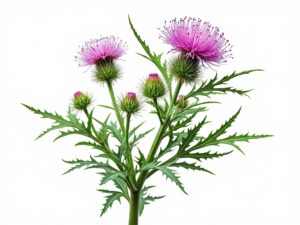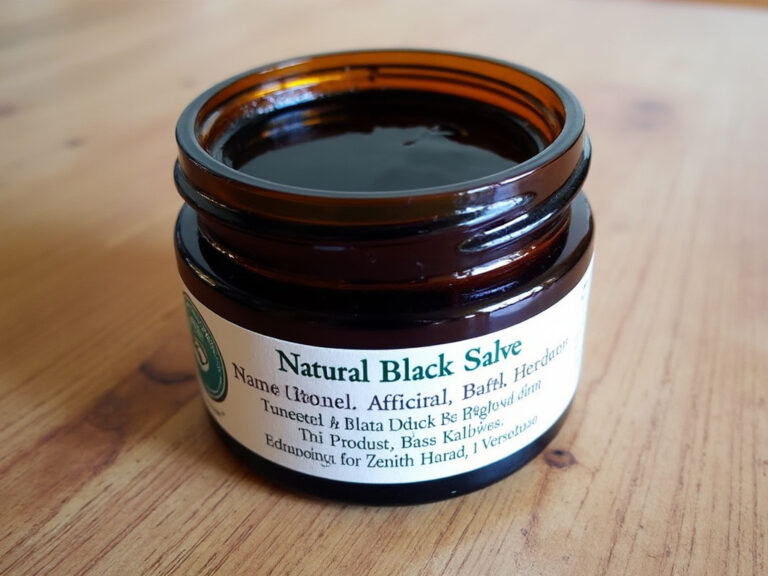
Herbal treatments have been used for centuries in various cultures to combat diseases, including cancer. Some herbs have shown promising properties that can complement traditional cancer therapies. Here’s a look at some top common herbs used in cancer treatment and their benefits:
1. Bloodroot (Sanguinaria canadensis)

- Benefits: Bloodroot contains sanguinarine, an alkaloid known for its anti-cancer properties. Research suggests that sanguinarine can induce apoptosis (programmed cell death) in cancer cells, inhibit the growth of new blood vessels (antiangiogenic), and has shown antitumor effects in various studies. It’s particularly noted for its potential in treating skin cancers. However, its use comes with significant caution due to its potential to cause tissue damage and disfigurement if not used correctly.
- Usage: Traditionally, bloodroot has been used both topically for skin lesions and cancers, and internally, though the latter is less common due to its toxicity. When used inappropriately, it can lead to severe skin damage, which is why it should only be used under strict medical supervision.
- Also see: Bloodroot
2. Turmeric (Curcuma longa)

- Benefits: Curcumin, the active ingredient in turmeric, has potent anti-inflammatory and antioxidant properties. It has been studied for its ability to reduce tumor size and fight several types of cancer, including breast, colon, and prostate cancers, by interfering with cancer development, growth, and spread.
- Usage: It can be incorporated into the diet or taken as a supplement. For therapeutic effects, concentrated curcumin supplements are often recommended.
- Also see: Turmeric
3. Ginger (Zingiber officinale)

- Benefits: Ginger has been recognized for its anti-inflammatory and antioxidant effects, which might help in reducing nausea related to chemotherapy and could have direct anti-cancer effects. Studies have explored its potential against ovarian, colorectal, and other cancer types.
- Usage: Can be consumed fresh, as a tea, in cooking, or supplement form.
- Also see: Ginger
4. Green Tea (Camellia sinensis)

- Benefits: Contains catechins, particularly epigallocatechin gallate (EGCG), which have been shown to inhibit cancer cell proliferation and induce apoptosis in various cancer types, including lung, breast, and prostate cancers.
- Usage: Drinking several cups a day or taking green tea extract supplements.
- Also see: Green Tea
5. Milk Thistle (Silybum marianum)

- Benefits: Silymarin, the active substance in milk thistle, is known for liver detoxification, which can be beneficial for those undergoing chemotherapy. It might also offer protective effects against liver cancer and other types through its antioxidant properties.
- Usage: Available in capsules, extracts, or as a part of herbal blends.
- Also see: Milk Thistle
6. Dandelion Root (Taraxacum officinale)

- Benefits: Recent studies on X and other platforms highlight dandelion root’s potential to induce apoptosis in cancer cells, particularly effective against leukemia, prostate cancer, and chemo-resistant melanoma. While not as widely recognized in conventional treatment, it’s gaining attention in herbal medicine circles.
- Usage: Often consumed as a tea or in capsule form.
- Also see: Dandelion Root
7. Graviola (Annona muricata)

- Benefits: Also known as soursop, this plant has been tested for its anti-cancer properties, particularly against breast, lung, and pancreatic cancers, due to its acetogenins which can inhibit cancer cell growth.
- Usage: The leaves are typically used to make tea, or extracts can be taken.
- Also see: Graviola
Conclusion
While these herbs show promise, it’s crucial to approach herbal treatments with caution:
- Consult Healthcare Providers: Always discuss with oncologists or healthcare providers before starting any herbal treatment, especially to avoid any interactions with conventional treatments.
- Research and Quality: Ensure you’re informed by scientific research, and opt for high-quality, standardized herbal products.
- Understand the Risks: Herbs like bloodroot can be toxic or cause significant side effects if not used properly.
Herbal treatments can offer supportive roles in cancer care, potentially enhancing quality of life or aiding in symptom management. However, they should complement, not replace, the treatments prescribed by medical professionals.



